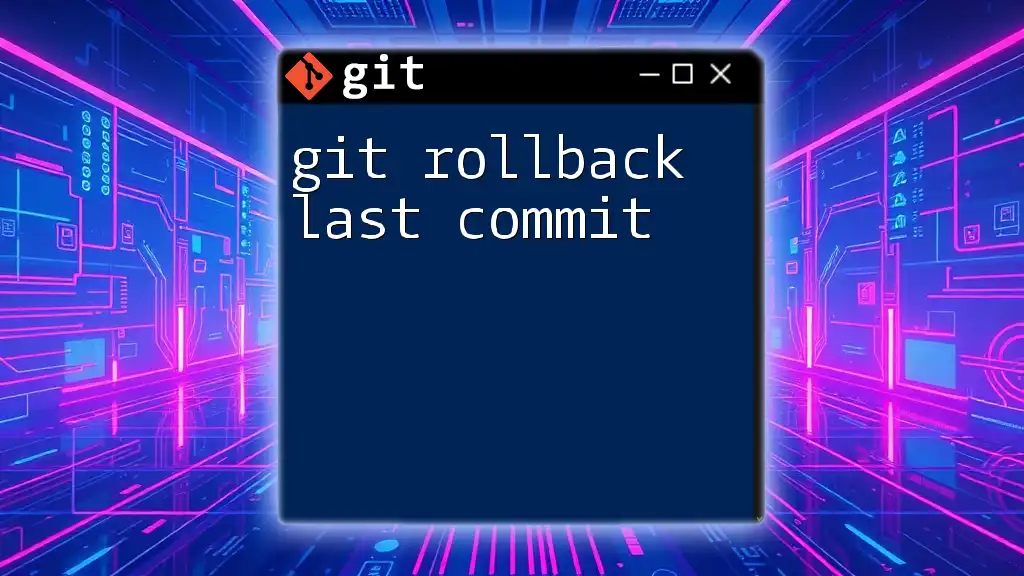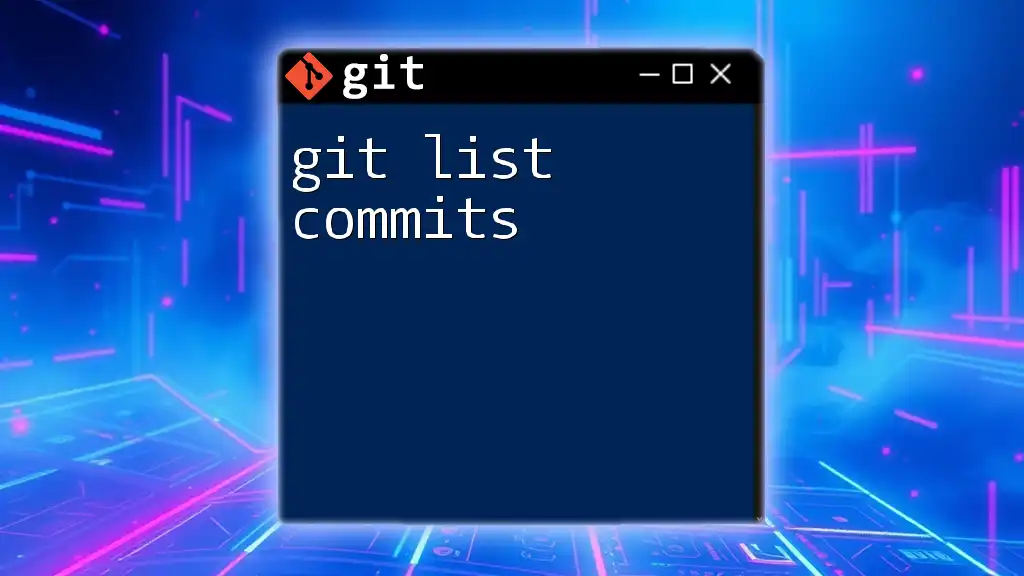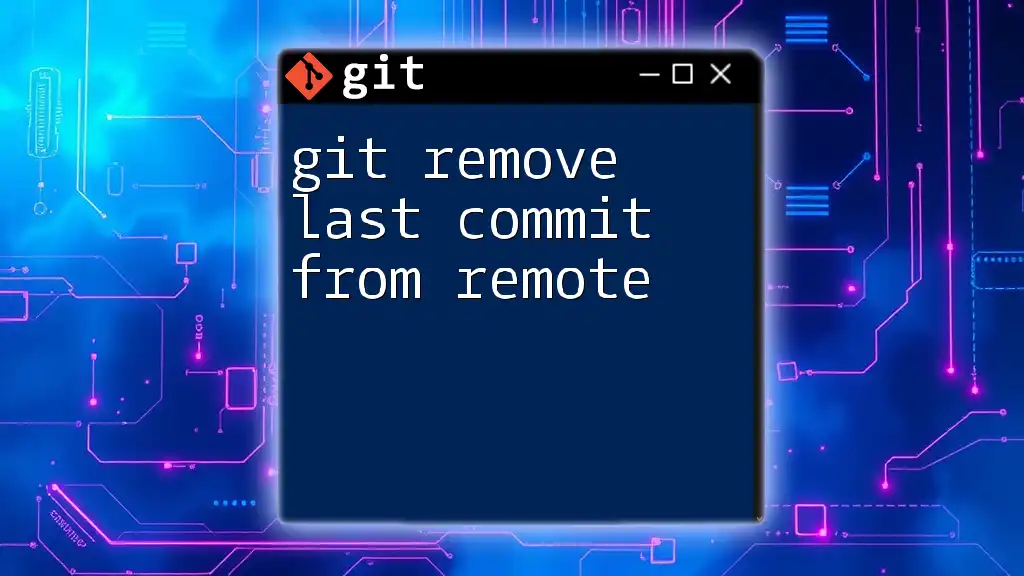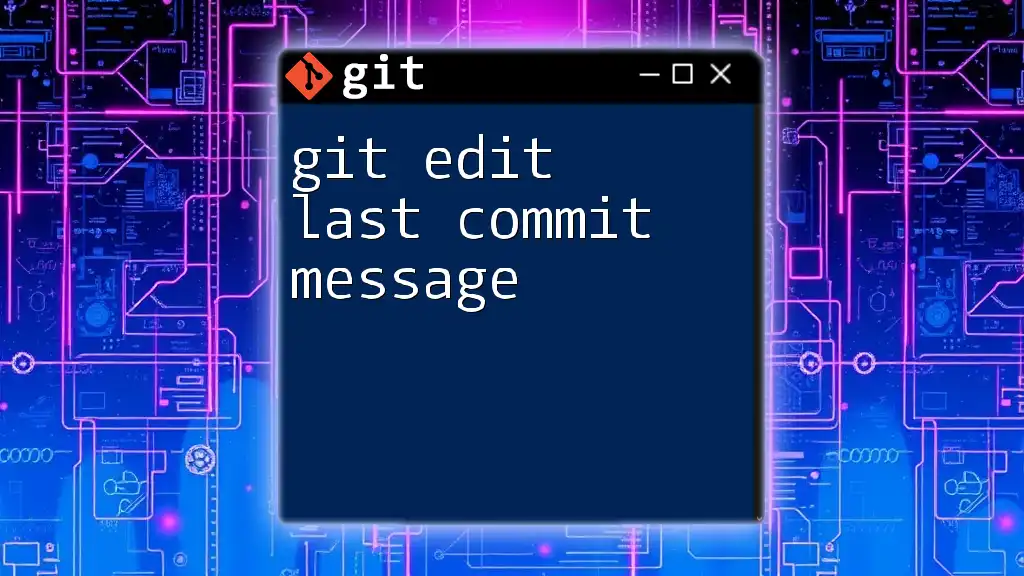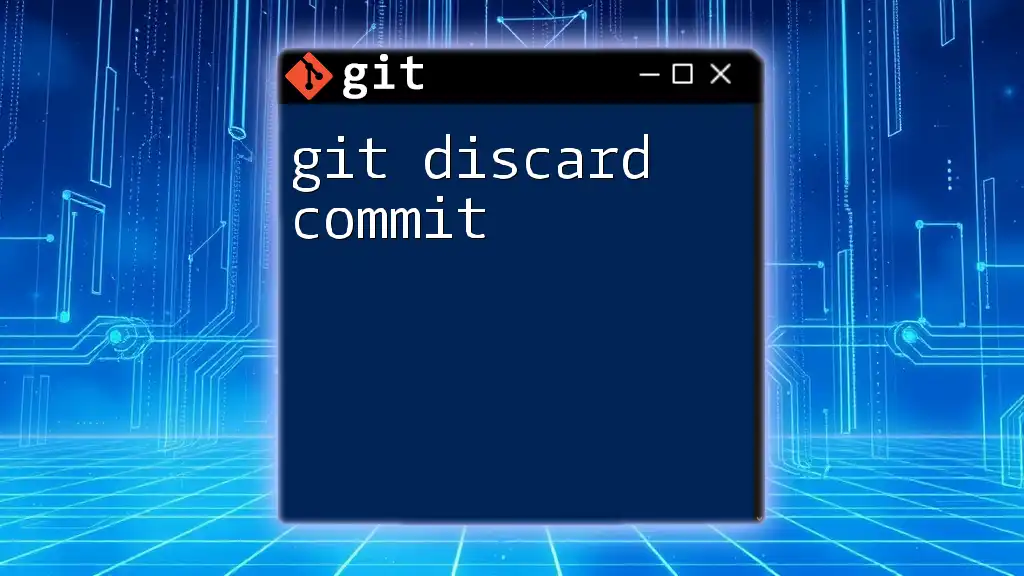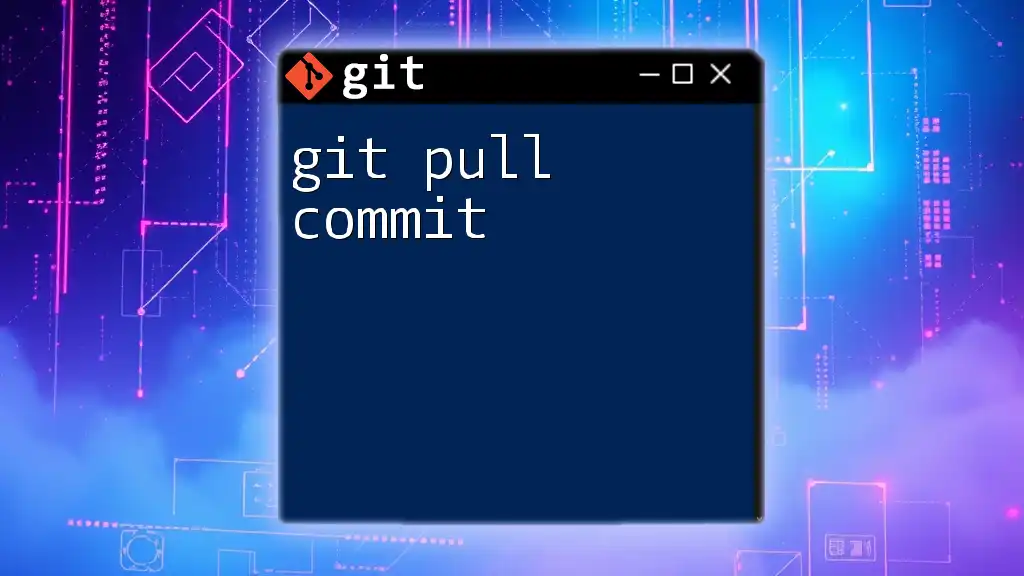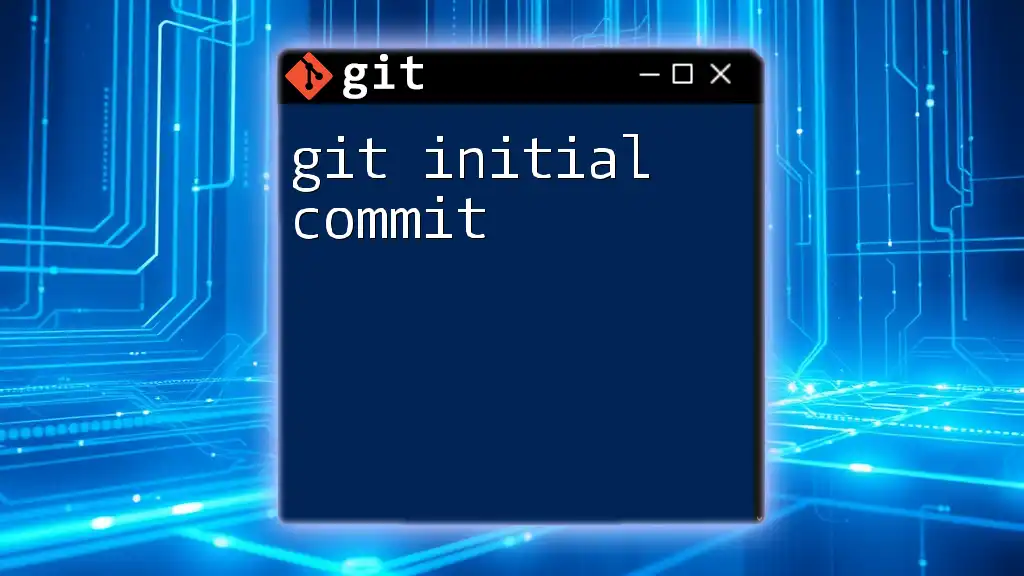To quickly undo the last commit in Git while keeping the changes in your working directory, you can use the following command:
git reset --soft HEAD~1
Understanding Git Rollback
What is Git Rollback?
In the context of version control systems like Git, a rollback refers to the process of undoing changes made in previous commits. It's a crucial function that allows developers to maintain the integrity of their code while addressing mistakes or incorrect additions. To effectively manage your project, understanding how to perform a rollback is essential.
Why Rollback a Commit?
There are several scenarios where rolling back a commit becomes necessary.
- Mistakes in commits can arise from accidentally adding files, making code changes that create bugs, or improperly formatting commit messages.
- Accidental adds or changes can clutter your commit history and lead to confusion in collaborative environments.
Emphasizing the benefits of maintaining a clean commit history underscores the importance of knowing how to execute a proper rollback when needed.
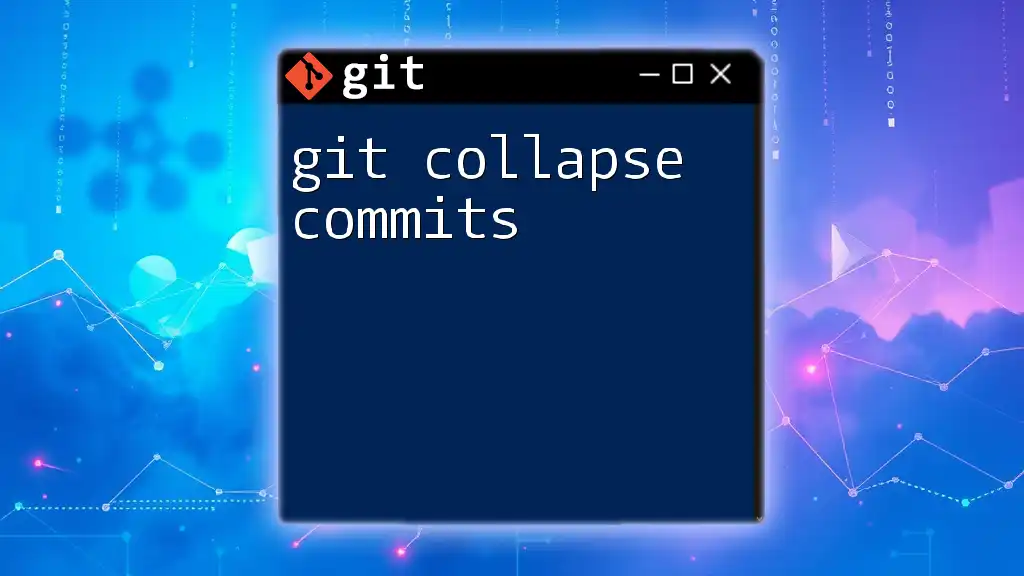
Preparing for a Rollback
Evaluating Your Current Commit History
Before rolling back a commit, it’s vital to evaluate your commit history. Use the command:
git log
This will display your commit messages along with the unique commit SHA (a hash representing each commit). Understanding how to read this output is essential, particularly the most recent commit, as it is the one you’ll be rolling back.
Determining the Type of Rollback Needed
Not every rollback is the same. It’s crucial to distinguish between rolling back to a previous commit and resetting the branch itself.
- Soft reset keeps your changes in the staging area.
- Mixed reset unstages your changes but leaves them modified in your working directory.
- Hard reset deletes your changes permanently from both staging and working directories.
Understanding these distinctions will help you choose the correct method for your situation.
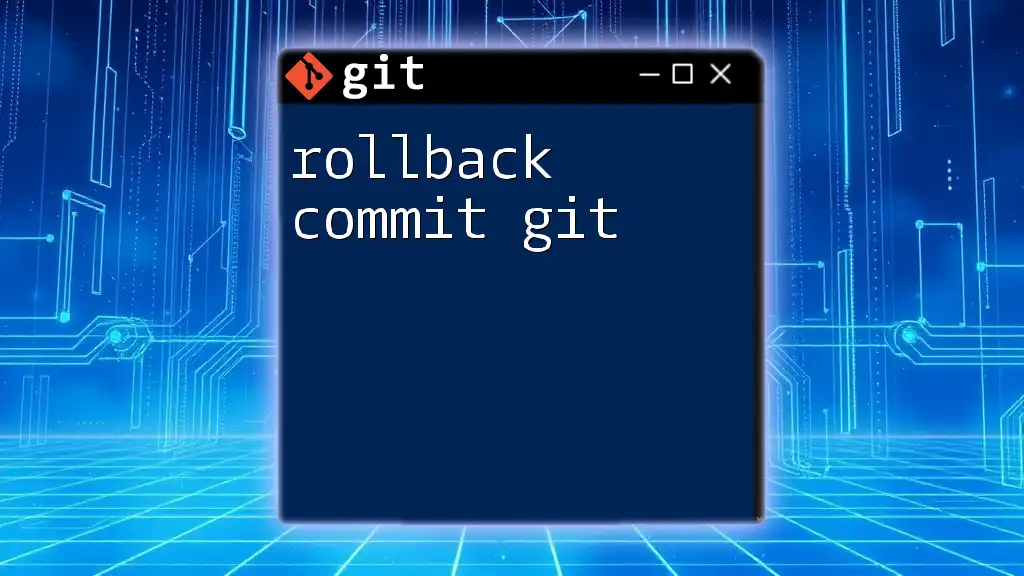
Methods to Rollback the Last Commit
Using `git reset`
Soft Reset
A soft reset is ideal when you want to preserve your changes while undoing the last commit. It allows you to make additional edits without losing the current state of your work. To perform a soft reset, run:
git reset --soft HEAD~1
This command moves the current branch reference to the previous commit (HEAD~1) and leaves your changes staged in the index, allowing them to be recommitted after adjustments.
Mixed Reset
If you want to keep your changes but unstage them, a mixed reset is what you need. Use the following command:
git reset HEAD~1
This will remove the last commit and unstage the changes, moving them back to your working directory. This is especially useful when you realize the commit was incorrect but you still want the modifications.
Hard Reset
Be cautious with a hard reset. It deletes all changes made in the last commit from both the index and working directory. Use it as a last resort when you are sure about wanting to permanently lose those changes:
git reset --hard HEAD~1
With this command, not only do you remove the commit, but the changes will also be wiped from your local filesystem, leaving you with the state of the project as it was at the previous commit.
Using `git revert`
When collaboration is key, and you want a safer approach, git revert is the way to go. This method creates a new commit that undoes the changes from the specified commit without altering the commit history.
Run this command to revert the last commit:
git revert HEAD
This will prompt you to create a new commit message for the revert. The advantage here is that you maintain a complete history of what changes were made, including the undo action, which is helpful in multi-developer environments.

Best Practices for Rolling Back
Keeping a Backup
Before rolling back, consider creating a backup. Working in separate branches can save you from losing important code alterations. Use the command:
git checkout -b backup-branch
This creates a new branch with your current state, ensuring you can return to it if needed.
Documenting Your Changes
Documenting your changes with clear commit messages is crucial. A well-maintained commit history can alleviate confusion when rollbacks are required. Aim for specific messages that convey what was changed and why it’s essential.
Communicating with Your Team
Rolling back changes can significantly impact team workflows, particularly in shared repositories. It’s vital to maintain open lines of communication with your team members about any rollbacks. Consider using pull requests, even for individual work, to discuss necessary rollbacks and the reasons behind them.
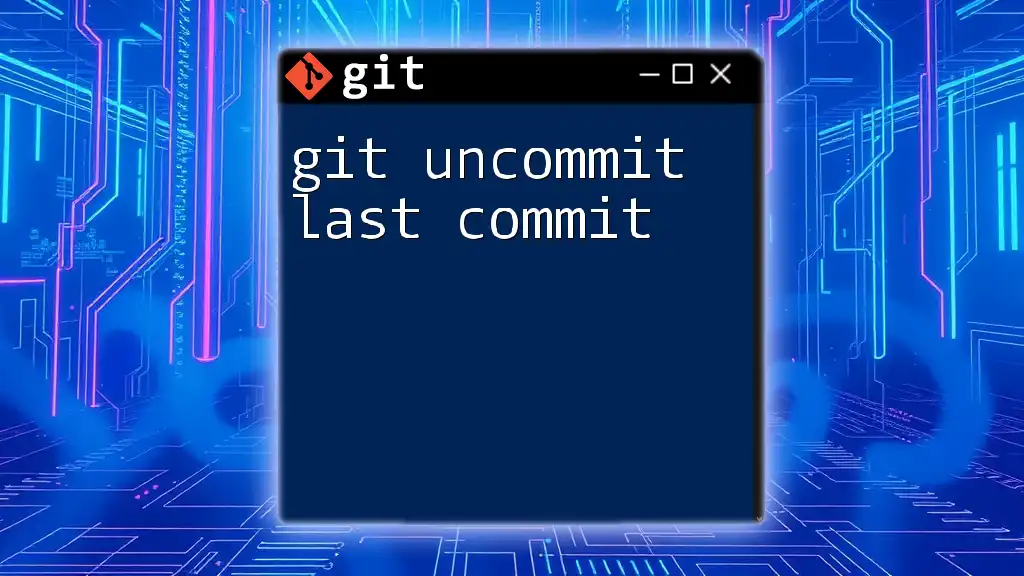
Common Issues and Troubleshooting
What to Do If You Encounter Conflicts
When rolling back, you might encounter merge conflicts. These occur when changes from the rollback interfere with changes made in other commits. Using `git mergetool` can simplify this process, allowing you to visually resolve conflicts step-by-step.
Undoing a Rollback
If you find that you’ve mistakenly rolled back changes, you can recover lost work using the reflog. This command:
git reflog
displays a history of your actions in Git, including rolls and resets. You can find the previous commit SHA from here and use `git reset` to revert back to that commit.

Conclusion
In conclusion, understanding how to execute a git rollback last commit effectively is a vital skill for any developer. Whether you choose to use reset or revert, knowing the right approach for your situation can save significant time and frustration. Encouraging practice in a test repository will help build confidence in using these commands. As you refine your Git skills, don’t hesitate to seek further resources and engage with the wider community to deepen your understanding of version control.

